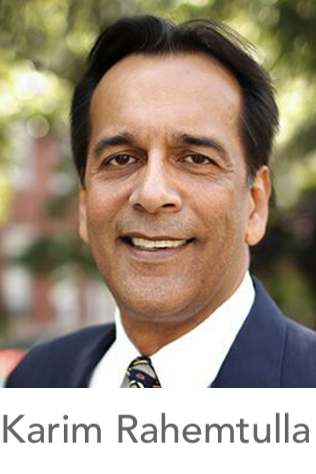
Creating income for today, wealth for tomorrow | Issue 57, December 2017
The Amazon-Proof Business With a Strong and Growing Yield

Dear Member,
Wealth doesn’t have the same meaning it used to.
Malcolm Forbes’ popular quote “He who dies with the most toys wins” no longer applies.
For more and more people, having money means freedom and control over their life and experiences.
In 2015, my wife and I took our two kids to Italy for 10 days.
Sure, I could have left the kids at home and spent the money on a nicer car.
But the four of us had an incredible time together.
No doubt it’s a trip they’ll tell their grandkids about.
For me and millions of others, having fun with family and friends is more important than owning things.
That’s why I love the idea of investing in companies that provide those meaningful experiences – businesses whose margins can’t be squeezed so tight by Wal-Mart (NYSE: WMT) or Amazon (Nasdaq: AMZN) that they’re forced out.
Unlike companies that provide products, those that offer experiences have enjoyed strong growth and pricing power as the economy has rebounded.
That should continue as the economy accelerates in the coming years.
It’s why Six Flags Entertainment (NYSE: SIX) is the perfect addition to the Compound Income Portfolio.
In North America, Six Flags owns and operates 20 amusement parks that served 29 million guests last year.
Its parks include Six Flags Magic Mountain in Los Angeles, Six Flags Great America in Chicago and Six Flags Great Adventure & Safari in Jackson, New Jersey.
Amusement parks have been able to significantly raise prices in the past. Since 2007, Universal Studios Hollywood has boosted prices by 88%, Disneyland by 67% and Knott’s Berry Farm by 50%. Comparatively, Los Angeles Dodgers tickets increased only 21% and Los Angeles Lakers tickets increased 16%.
The Disney Ticket Prices Are Too Damn High
When Walt Disney World first opened in Orlando in 1971, the price for a seven-ride ticket book was $4.75. Adjusted for inflation, that’s $28.20 in 2017.
Today, it costs $132.06 to get into Disney World, though admission covers as many rides as you want. When you look at the price of admission to Disney World, adjusted for inflation and compared with the price of gas, it’s startling.
Disney is clearly the industry leader when it comes to amusement parks. Mickey and company set the pace for prices. As Disney raises its prices every year, that allows competitors like Six Flags to also raise prices while still offering a less costly alternative to customers.
But Six Flags isn’t just growing by raising prices. The company sold a record number of season passes for 2018, and revenue per unique guest is at all-time highs. In addition, the company has added popular events such as Fright Fest in October and Holiday in the Park in December to generate revenue and spark interest in the off season.
Thanks to higher prices and attendance, Six Flags’ revenue has steadily climbed and is expected to rise 5% annually through 2020.
The Big Opportunity
So the business is strong. But what makes Six Flags an exciting long-term opportunity is its expansion overseas.
In 2019 and 2020, the company will open Six Flags Zhejiang and Six Flags Chongqing in China. Additionally, Six Flags Kids World, designed for families with young children, will open adjacent to the Zhejiang and Chongqing properties. There will also be a Six Flags Adventure Park for thrill-seekers who enjoy motocross racing, zip lining and whitewater rafting.
The timing couldn’t be better to expand in China, given the booming middle class and last year’s decision by the Chinese government to allow couples to have two children. This increase from the previous one-child policy led to an 8% increase in births last year for the country.
That means millions of Chinese kids and their families will be looking for something to do on weekends and during vacations. Just as these kids are getting tall enough to ride the rides, Six Flags will open its parks in China.
Six Flags is also in negotiations to open parks in Vietnam and Saudi Arabia. International expansion should help fuel growth for years.
So Nice They Hired Him Twice
James Reid-Anderson is the company’s CEO. He’s had a successful career with household-name companies like PepsiCo and Mobil. In 2009, Six Flags filed for bankruptcy protection. Reid-Anderson was brought in the following year to lead the recovery effort.
Between August 2010 and February 2016, Six Flags’ market value grew 700% under his leadership. He left in February 2016 but was brought back this past July. With Reid-Anderson back at the helm, I’m even more confident in Six Flags’ prospects.
Additionally, the CEO is the sixth-largest shareholder and largest individual shareholder, with 3.6 million shares, or more than 4.2% of the entire company. So he has some incentive to grow the dividend and the stock price.
The Dividend
Six Flags currently pays a $0.64 per share quarterly dividend, which comes out to a 4.2% dividend yield. It has raised its dividend every year since it began paying one post-bankruptcy in 2010.
The company generates plenty of cash to continue paying and raising the dividend. Through the first nine months of the year, free cash flow totaled $263 million, while dividends paid amounted to $168 million. That’s a payout ratio of 63%, which is in my comfort zone. I like to see payout ratios of 75% or lower.
In 2018, Six Flags’ free cash flow is forecast to be $314 million. After that, parks in China are scheduled to start opening, which will further add to cash flow.
It’s tough to find businesses whose margins aren’t squeezed by competitors. But the amusement park industry is one of them. Six Flags is one of the best operators, and it has pricing power, a talented CEO, and a strong and growing dividend.
I don’t expect any roller-coaster rides with this stock.
Action to Take: Buy Six Flags (NYSE: SIX) at the market, and add it to the Compound Income Portfolio. If possible, keep the stock in a tax-deferred account.
The Oxford Club’s 20th Annual Investment U Conference
March 15-18 | Four Seasons | Las Vegas
Are you free next March 15-18? If so, please join us at the Four Seasons in Las Vegas! Here’s your chance to connect with like-minded individuals, get inspired by our brilliant guest speakers and discover new investment ideas from our entire team of renowned experts.
Our speakers include Chief Income Strategist Marc Lichtenfeld, Bond Strategist Steve McDonald and Options Strategist Karim Rahemtulla... as well as crowd favorites such as Chief Investment Strategist Alexander Green, Sprott U.S. Holdings CEO Rick Rule and TradeStops CEO Richard Smith... and our exciting keynote speakers, the senior advisor to MIT’s Digital Currency Initiative, Michael Casey, and former Merrill Lynch stockbroker Mark Jeffries.
Together, our leading panel of speakers will teach you how to master the “art of intelligent speculation” – and they won’t leave any topic uncovered. You’ll learn everything you need to know about cryptocurrency investing, today’s hottest technology plays, the best options trading strategies and so much more.
As always, it wouldn’t be an Oxford Club event without a jam-packed schedule of exciting new moneymaking strategies and spectacular receptions, all of which will make this the most rewarding trip you’ll take all year.
Spots are filling up fast, but you still have time! For all the details and to reserve your seat today, simply click here.






